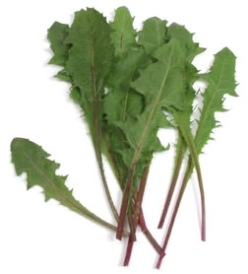Survival Skills: The Law of Threes
The Law of Threes is one of the most basic ways of determining your immediate needs in a survival situation. Understanding the rule and possessing the necessary survival skills will help you prioritize what you need to secure first when you are thrust into an emergency situation. Basically, the law states:
- You have 3 hours to find a way to maintain your core body temperature
- You have 3 days to procure water
- You have 3 weeks to find food
Please note that this is a general methodology for prioritizing needs and not a statement of survival absolutes. However failure to take care of these needs within the above time frame is a recipe for sure death.
Maintain Core Body Temperature
Maintaining your core body temp is one of the most important survival skills. This is a major priority and you do not have long to get it taken care of. There are two main ways you can do this; build a fire or use a shelter the right way.
Using a Shelter Properly
Before you automatically assume a shelter is something along the lines of a debris hut, know this, your first line of defense is the clothes on your back. Choose wisely. If you are not wearing proper clothing for the weather, a debris hut is not going to help you. This applies to both cold and hot weather scenarios. Cotton is great for staying cool in the summer, but is an absolute disaster in the winter.
Another important survival skills tip is based on the fact that the majority of your body heat escapes through your head. In the winter, cover up your head with a hat or scarf or whatever piece of clothing is available. During the summer, remove your hat occasionally to allow the heat to escape. A tarp is another way you can keep yourself out of the elements. Wear it or set it up. You can check out this video for some tips on using a tarp:
Build a Fire
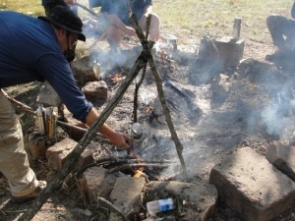
A fire can help you maintain your core body temp. You have to realize that maintaining your body temp and actually restoring it are two different things. When you feel cold, you still have your core body temp. When you start shaking uncontrollably, you are losing that precious body heat. It only takes a couple degrees to put you in serious jeopardy.
There are several ways to start a fire and hopefully this is one of the survival skills you have practiced and you have the gear needed to do so. A fire is not complete without some sort of reflector shield. There are typically plenty of things you can use in the landscape. When possible, position yourself and your fire between two rocks. This will help the warmth of the fire stay within the area and keep you warm. An aluminum tarp works wonders, but if you do not have one, rocks will do. If you don’t have rocks, you can build up some sort of wall with the debris in the area.
Obtaining Water
After you have taken steps to maintain your core body temperature, you need water. Despite the absolute necessity of having clean water, it is one of those survival skills that is rarely talked about in survival training classes. Why? Because it is like a slap in the face to realize most water you find anywhere in the United States today, is not clean. Despite that, you still need to find a way to clean the water and survive. If things are dire, like you are pushing your 3 days, you will have to drink dirty water and hope for the best. The side effects of dirty water are preferable to dehydration or death.
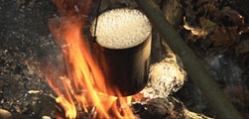
The best and only way to truly clean water is by boiling it. As you are packing your survival kit, make sure to include a cup or pot to do this. You can use plastic containers to boil water as well, they are just a bit more tricky to do so. You could also use steri-straws to clean the water and achieve a 99.9 percent rate of cleanliness. There are several other similar items on the market today that you could and must include in your pack.
If you don’t have either of those options, you will hopefully have the sun and a plastic garbage bag. A bag tied around vegetation and left to sit will draw out the moisture in the foliage.
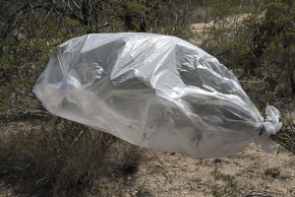
Finding Food
Finding food in the wild is one of those survival skills that is not quite as hard as some may make it sound. There are two sources of food, not including what you may have carried with you. Animal and plant sources are where you will need to look to fill your need for food. Now, this next part may ruffle some feathers, but read through it all with an open mind and you will see why plant sources are preferable to animal sources.
Animal Sources
Despite what some experts and instructors teach, animal sources should be your last resort for food when you are working against the clock. There are several reasons to back up this statement. Protein from a meat source takes longer to digest and will burn up 50 percent of the calories you managed to consume. In survival, every calorie counts towards you staying alive.
Factor in the calorie expenditure to trap or catch the animals and you are dangerously close to canceling out any calories you may gain by eating the animal. Then, you add in the energy and caloric expenditure it takes to prepare the animal for consumption and you are likely to have canceled out the calories altogether and may even be tipping the scales into the negative.
Back in the days of Lewis and Clark, the explorers noted in their journal their team was eating 20 pounds of meat a day. That may sound like a lot, but those men were starving. They were spending more than they were eating and they were relying on protein alone. They didn’t have enough carbohydrates or calories.
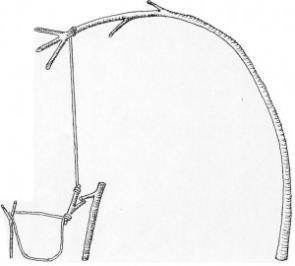
However, if you were to eat the organs and bone marrow of animal, you would be getting plenty of calories. These parts are easier to digest as well. Instead of reaching for a juicy leg, go for blood and organs if you want to get the most benefit. It is also a good idea to go after the smaller, easier-to-catch animals like squirrel, rabbits, groundhogs, etc. Deer and elk will be extremely difficult to hunt during a survival situation, especially if you do not have hunting equipment. You can use gigs to catch the smaller animals.
Making a Primitive Gig

Gigs are tools with prongs at the end that are used to stab/trap a land or water-borne animal. Before we get into the art of making your own primitive gig from materials in your immediate surroundings, you need to understand; it is not safe to get into the water if the temperature is cold. You would be jeopardizing your life.
In this video, you can get a good visual of the gig-making process from start to finish, so that you can add it to your arsenal of survival skills. It is rather simple to do if you have a knife and hopefully a hatchet. You can use a tree branch to make your gig. When possible, choose a branch from a tree that is dead.
Once you have your branch, you need to split it to create at least two prongs. If you can get four, great. However, two and three-pronged gigs are just as effective. Once you have the prongs, you want to create sharp points on the ends. If possible, create barbs on those prongs for added effectiveness once you start hunting.
This is a primitive tool, but it is effective and should be on your survival skills resume. Don’t wait until you need it, get out there and practice today.
Plant Sources
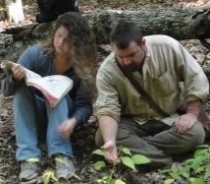
Do not discount the plants that grow wild in every area. Yes, it does take a lot of time to learn which plants are safe to eat, which is why a lot of instructors just ignore them and talk about trapping and hunting animals. You do not have to remember every single plant species. Focus on the ones in your area to start with. It is a lot of training and studying, but it is a fun experience that the whole family can enjoy.
When you start your training, it is highly recommended you use three sources to identify a plant. Start with some of the basics like, cattails, nuts, wild berries and grasses. There are plenty of other “weeds” you can eat that will provide plenty of nutrition. Take the time today to learn this extremely valuable survival skill and you will never have to worry about going hungry in a survival situation.
About The Author
Craig Caudill is an outdoor survival enthusiast who teaches outdoor survival skills training online at Dan’s Depot and offline in the wilderness at his Nature Reliance School.

